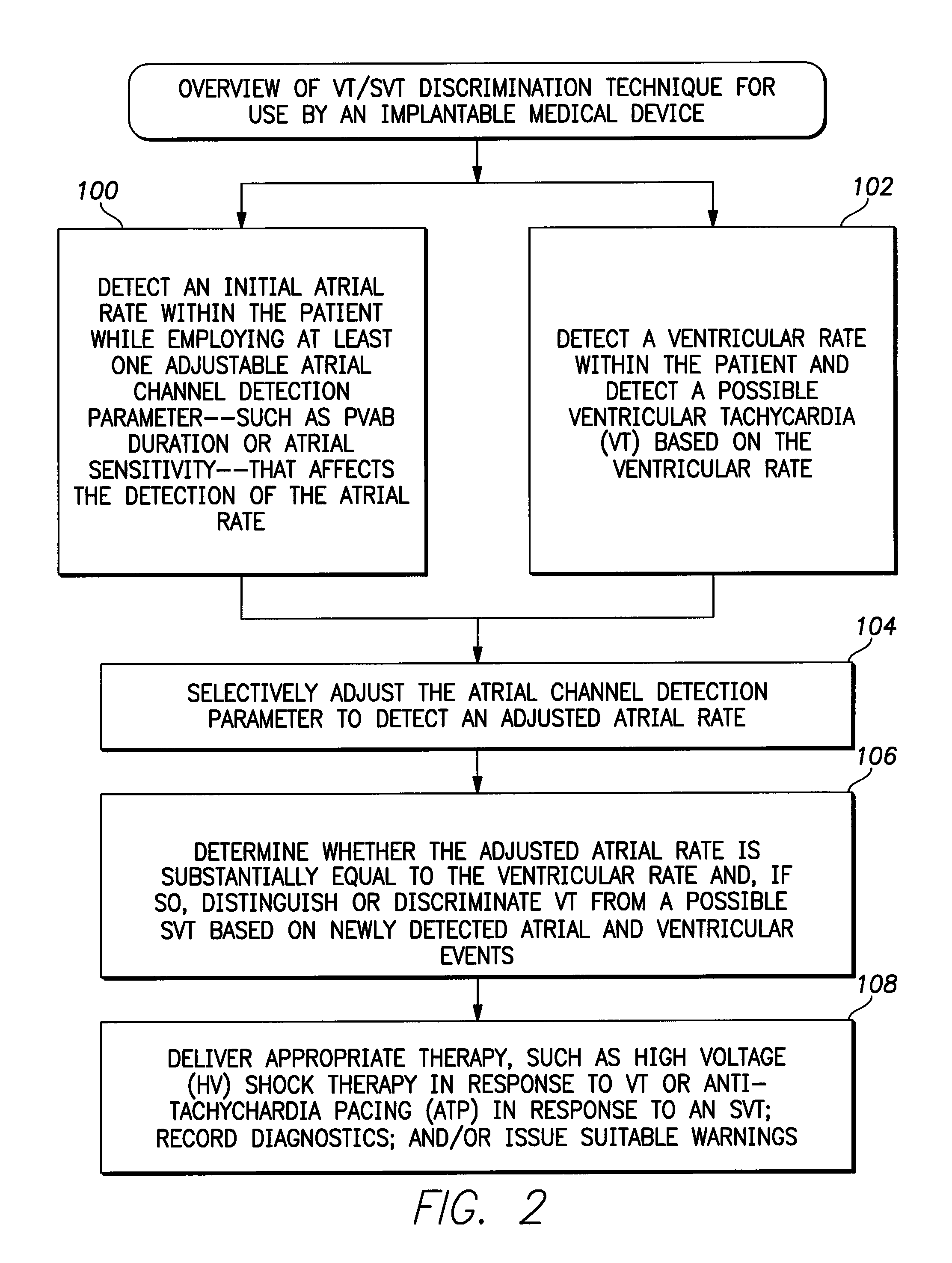Systems and methods for use with an implantable medical device for discriminating VT and SVT be selectively adjusting atrial channel sensing parameters
a technology of atrial channel sensing and selective adjustment, which is applied in the field of implantable cardiac stimulation devices, can solve the problems of inappropriate vt therapy, device does not immediately deliver high-voltage shock therapy, and significant underestimation of the true atrial ra
- Summary
- Abstract
- Description
- Claims
- Application Information
AI Technical Summary
Benefits of technology
Problems solved by technology
Method used
Image
Examples
Embodiment Construction
[0020]The following description includes the best mode presently contemplated for practicing the invention. This description is not to be taken in a limiting sense but is made merely to describe general principles of the invention. The scope of the invention should be ascertained with reference to the issued claims. In the description of the invention that follows, like numerals or reference designators will be used to refer to like parts or elements throughout.
Overview of Implantable Medical System
[0021]FIG. 1 illustrates an implantable medical system 8 having a pacer / ICD or CRT-D 10 equipped with an atrial channel adjustment-based VT / SVT discrimination system for distinguishing VT from SVT within a patient in circumstances where the ventricular rate exceeds the observed atrial rate. In the following examples, a pacer / ICD is described. Other implantable cardiac rhythm management devices can instead be used, such as CRT-D devices. In the examples herein, discrimination is achieved b...
PUM
 Login to View More
Login to View More Abstract
Description
Claims
Application Information
 Login to View More
Login to View More - R&D
- Intellectual Property
- Life Sciences
- Materials
- Tech Scout
- Unparalleled Data Quality
- Higher Quality Content
- 60% Fewer Hallucinations
Browse by: Latest US Patents, China's latest patents, Technical Efficacy Thesaurus, Application Domain, Technology Topic, Popular Technical Reports.
© 2025 PatSnap. All rights reserved.Legal|Privacy policy|Modern Slavery Act Transparency Statement|Sitemap|About US| Contact US: help@patsnap.com



